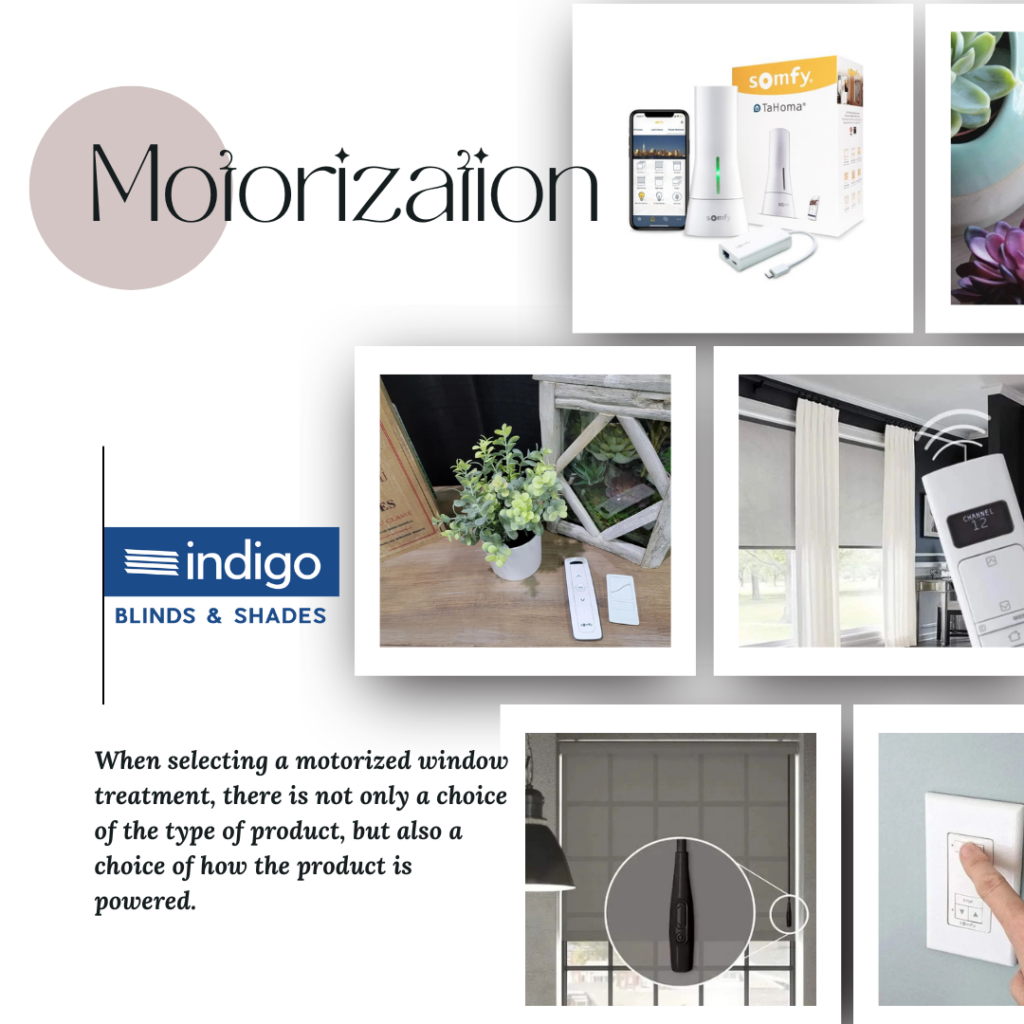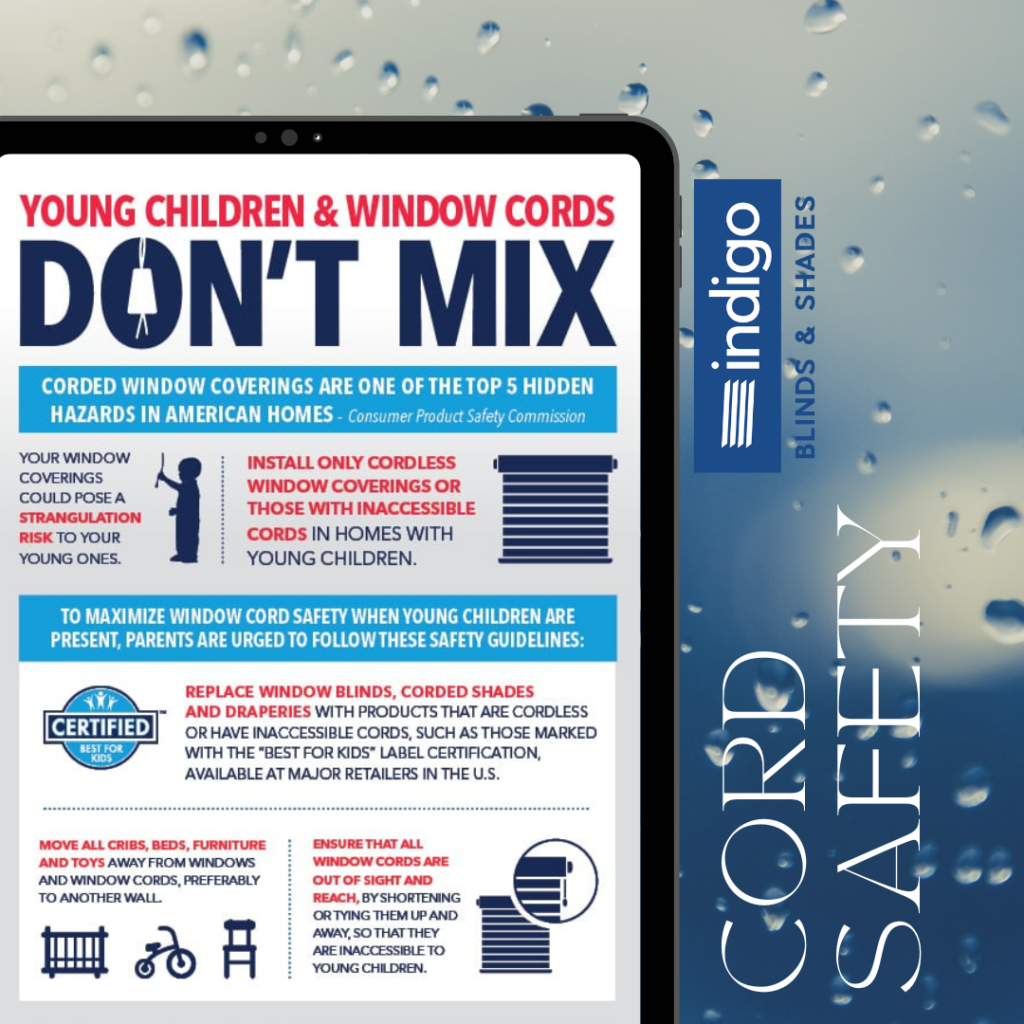New U.S. Cord Safety Regulations come into effect May 30, 2023. The U.S. Consumer Product Safety Commission (CPSC) has determined preliminarily that custom window coverings with accessible operating cords that are longer than 8 inches pose an unreasonable risk of strangulation to children 8 years old and younger.

To address this risk of strangulation, the Commission proposes a rule under the Consumer Product Safety Act (CPSA) to require that operating cords on custom window coverings meet the same requirements as operating cords on stock window coverings, as set forth in the applicable voluntary standard.
Thus, the new cord safety regulations rule proposes that operating cords on custom window coverings must be cordless, inaccessible, or 8 inches or shorter in length in any use position. If finalized, operating cords on custom window coverings would require testing and certification to the rule under section 14 of the CPSA.
Moreover, operating cords on custom window coverings that meet the definition of a “children’s product” would require third party testing by a CPSC-accredited third-party conformity assessment body. Accordingly, the rule also proposes to amend the Commission’s regulation on requirements pertaining to third party conformity assessment bodies to add “Safety Standard for Operating Cords on Custom Window Coverings” to the list of rules that require third party testing.
The ANSI standard requires stock window coverings to have:
- No operating cords (cordless);
- Inaccessible operating cords; or
- Operating cords shorter than 8 inches in any use position.

Based on review and consideration of the public comments, the Commission is providing requirements for an additional method to meet the “inaccessible” requirement, a retractable cord, as long as it meets the performance requirements in the rule. The final rule does not preclude manufacturers from developing new methods of meeting the “inaccessible” requirement. However, if manufacturers choose to use a rigid cord shroud or a retractable cord, these devices must meet the requirements in the final rule. The final rule also contains requirements for one method to make accessible continuous loops non-hazardous: loop cord and bead chain restraining devices.
Dates: The effective date of the rule is May 30, 2023, and the rule will apply to all custom window coverings manufactured after that date. The incorporation by reference of the publication listed in this rule is approved by the Director of the Federal Register as of May 30, 2023. The final rule will extend the requirements for stock products to custom window coverings.
For more detailed information on the New U.S. Cord Safety Regulations: LINK
Window coverings include a wide range of products, including shades, blinds, curtains, and draperies. A cord or loop used by consumers to manipulate a window covering is called an “operating cord” and may be in the form of a single cord, multiple cords, or continuous loops. “Cordless” window coverings are products designed to function without an operating cord, but they may contain inner cords. Window covering operating systems can vary slightly by window covering type, but all operating systems fit into one of two general categories: corded or cordless.
Virtually every window covering type is available with a “cordless” operating system, which means it has been designed to function without an operating cord. Cordless window coverings may require inner cords, but these can be, and typically are, made inaccessible. In lieu of an operating cord, cordless operating systems can be manual or motorized. A manual operating system allows users to lift or lower the window covering with a handle or directly by hand. A motorized operating system uses a motor and control system to manipulate the window covering, such as a remote control or wall switch. Installation of cordless window coverings that are motorized is more complicated than manual systems because motorized systems require a power source.
Custom Product Requirements in Final Rule For The New Cord Safety Regulations:
| Performance Requirements | Custom Products Final Rule |
| (No operating cords (cordless) | Allowed |
| Short cord (8 inches or shorter) in any state | Allowed |
| Inaccessible operating cords | Allowed |
| Rigid cord shrouds (can be used with any operating system) | Allowed if Rigid Cord Shroud meets ANSI/WCMA-2018 test requirements plus deflection and deformation tests. |
| Single retractable cord lift system | Allowed provided that it meets complete retraction at 30-gram, non-cord retraction device, and stroke length limited to 12″ below the headrail. |
| Non-hazardous Cord Loops using Cord and Bead Chain Restraining Device | Allowed if device meets ANSI/WCMA-2018 tests and test or UV followed by cyclic test and deflection test. |
| Accessible Operating Cords longer than 8″ | Prohibited |
| Continuous Loops with Tension Devices | Prohibited |
| Cord Loop Lift Systems | Prohibited |
Contact Us: Here for more details and to discuss options for Cord Safety.





